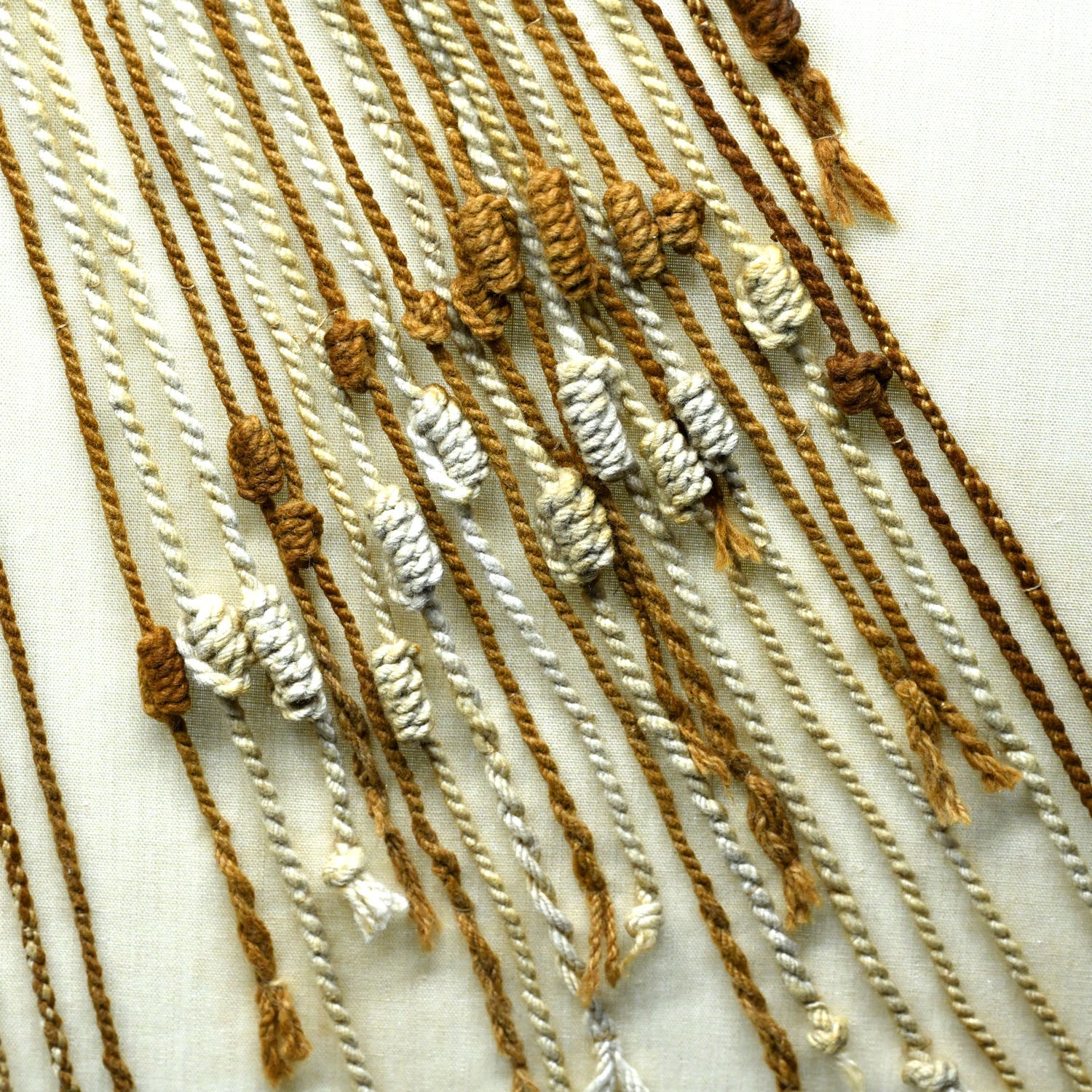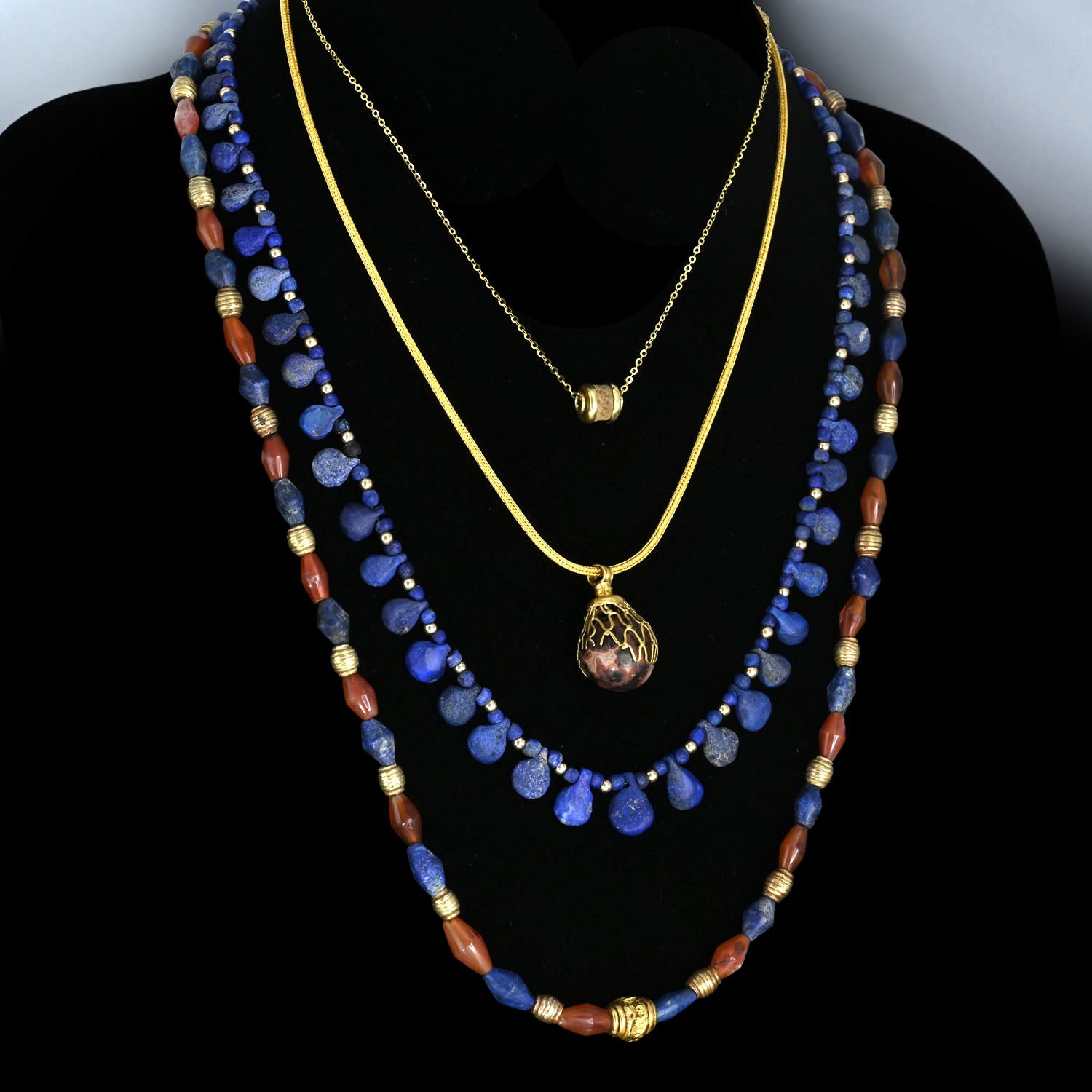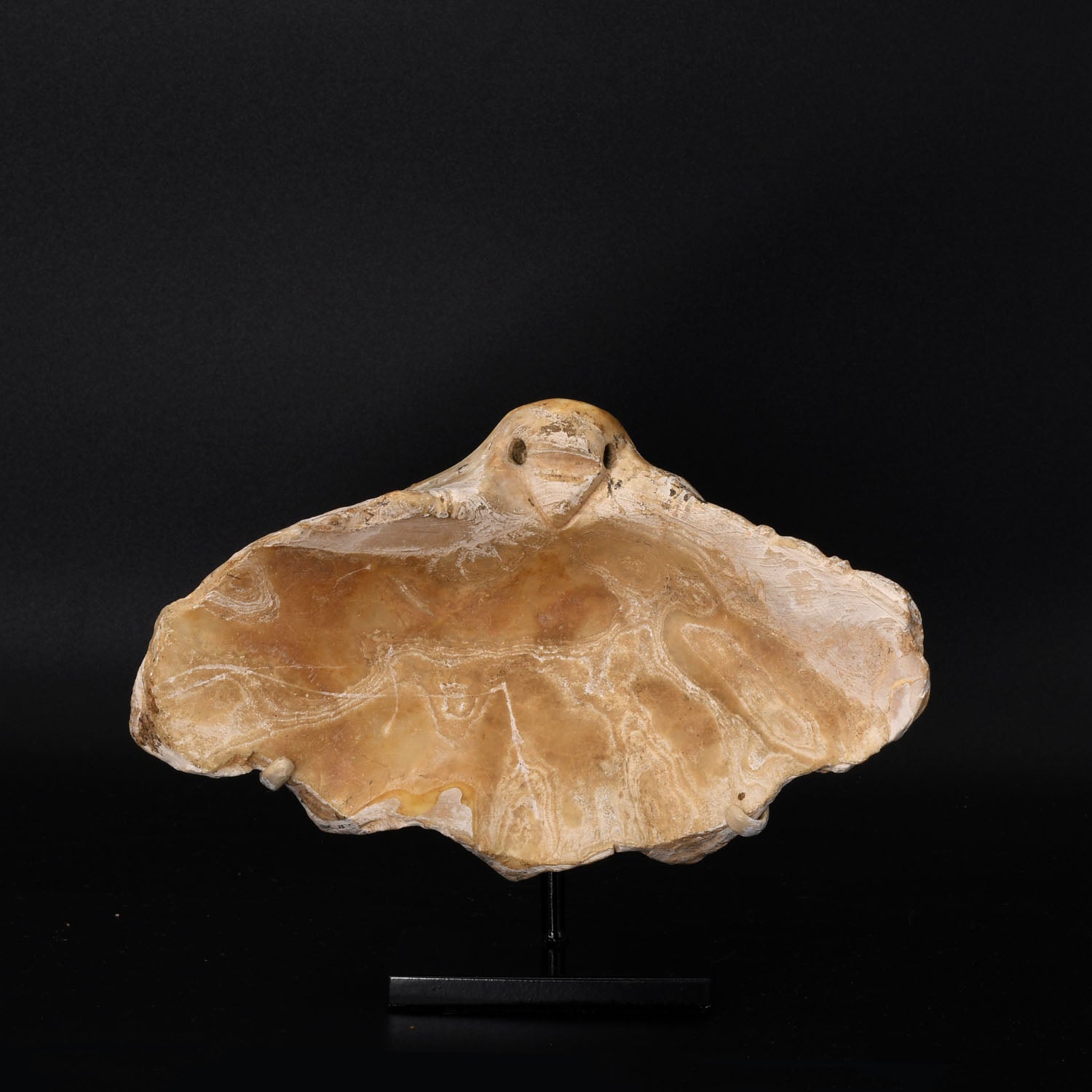
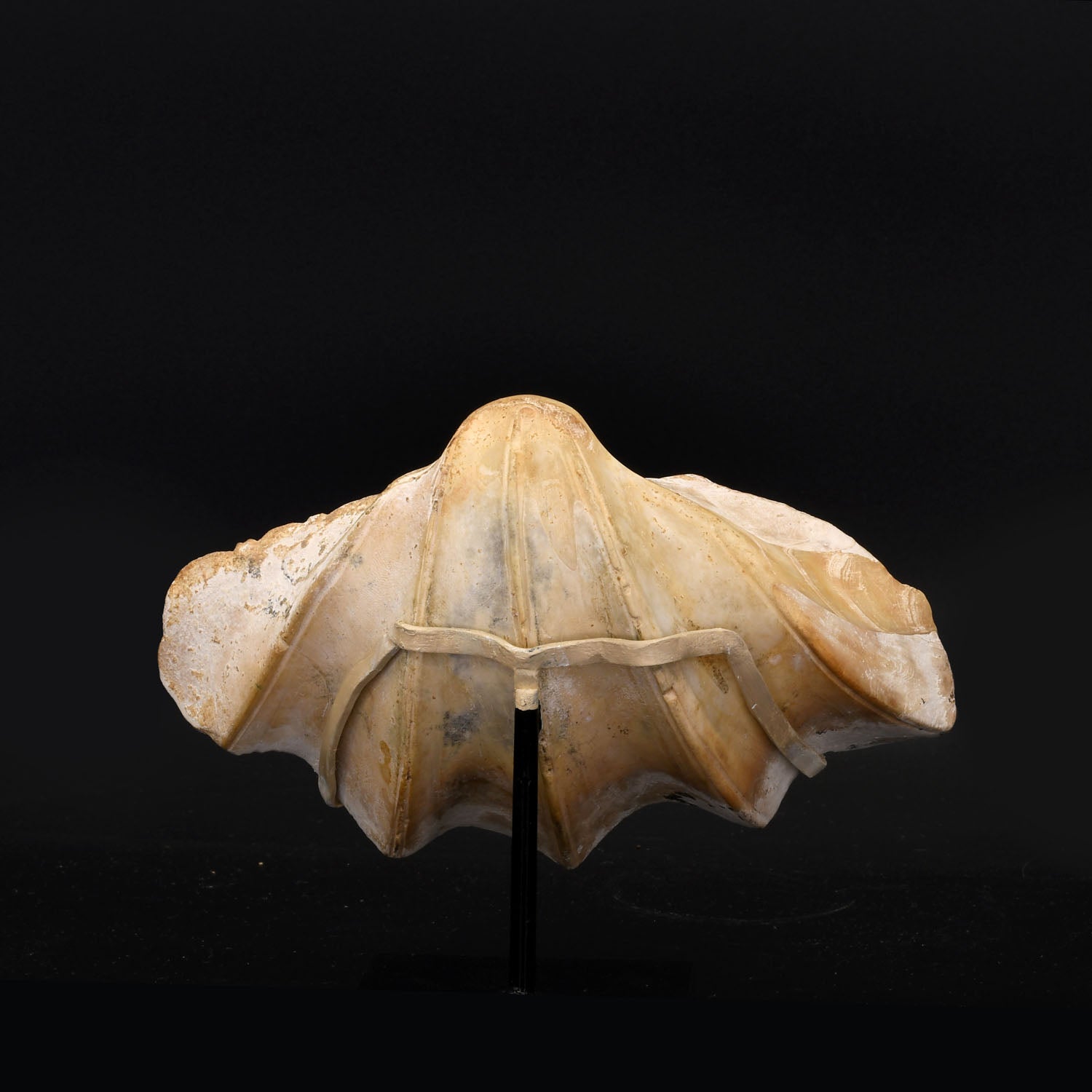
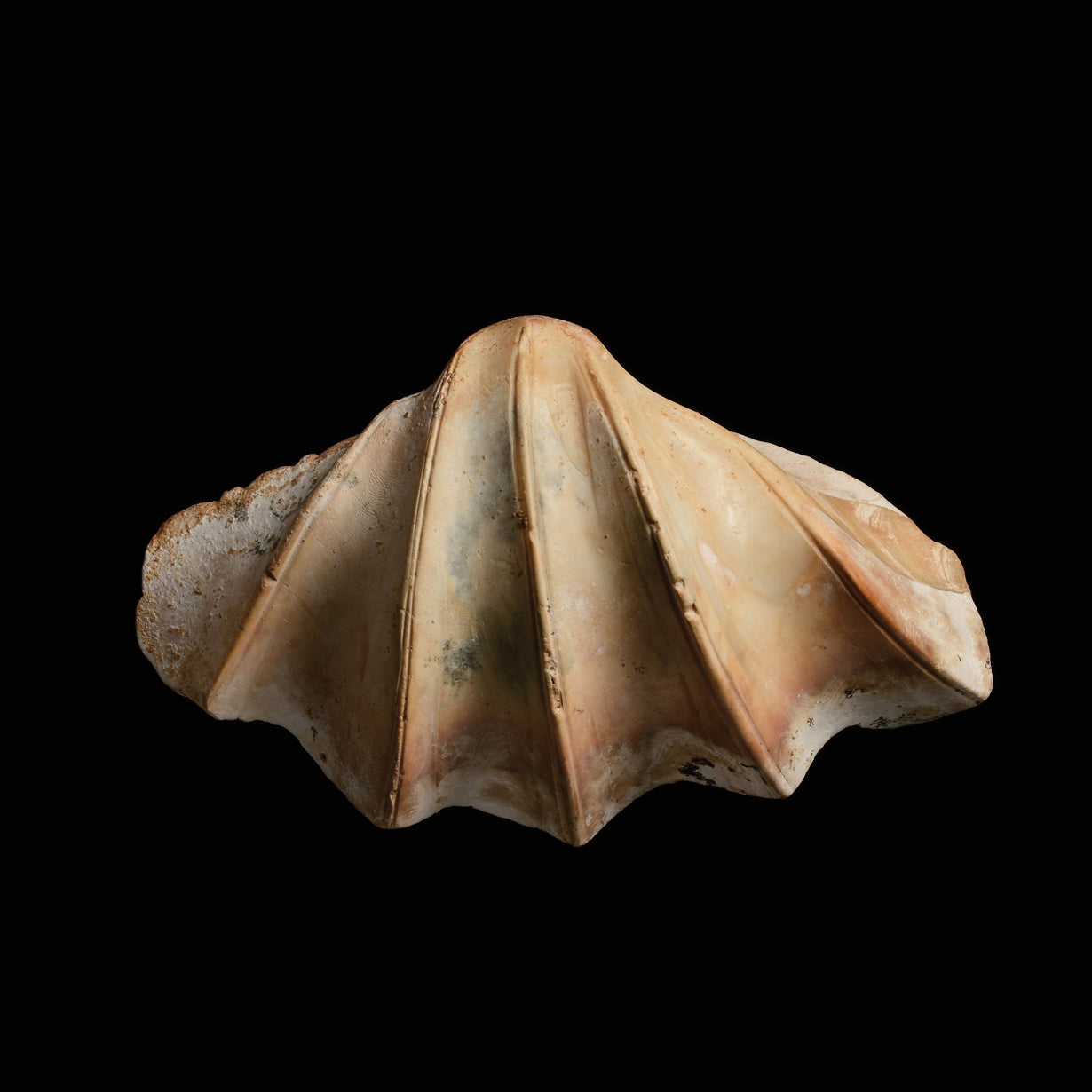
A rare Phoenician Carved Tridacna Shell with Bird's Head, ca. 630 - 580 BCE
This object qualifies for free and fast worldwide shipping.
This shell, carved from Tridacna squamosa, a type of giant saltwater clam that flourished in the warm waters of the Red Sea and the Persian Gulf, was used to carve a distinctive type of cosmetic container for a short period between the late seventh and the early sixth century BCE The elongated form has a deeply fluted exterior and a concave interior, the umbo (the protrusion at the top of the shell) is simply but powerfully carved in the form of a bird's head, featuring large drilled eyes on either side of a triangular beak. Below the head, the natural fluted folds of the shell give the impression of the bird's widespread wings. The sides suggest further carving was done, perhaps feet or wing feathers but it is very worn and now hard to make out. The exterior has been smoothed and polished to bring out the natural beauty of the shell, thus resulting in a luxury item of impressive power and beauty.
Background: Produced in workshops along the Syrio-Phoenician coast, these cosmetic shells were distributed as far as Susa to the east and mainland Greece to the west when flourishing trade with these cultures supplied the keen demand for foreign luxury goods. Production of these containers had a relatively short lifespan — beginning with the Assyrian withdrawal from the coast and ending with the Babylonian conquest. Only about a hundred containers of this type survive with most examples found in sanctuaries of female deities, but examples are also known from female tombs on Rhodes.
Cataloged into groups by archaeologist Rolf Stucky in the 1970s, engraved tridacna shells feature a wide range of motifs, including sphinxes, griffins, birds, and a variety of plants. While umbos also featured different effigies, most excavated examples are of siren’s heads; birds are much rarer and have been categorized into a special subset (Stucky 1974). Within this subset, no two excavated examples are exactly alike, making this extraordinary piece very unique.
Online Parallels: British Museum, accession number: 1852,0112.3
Metropolitan Museum of Art, accession number: 55.65.12
Pergamonmuseum, Staatliche Museen zu Berlin, accession number: DE-MUS-815718
Reference: Stucky, Rolf A. 1974. "The Engraved Tridacna Shells." Dedalo 19. Sao Paulo, Brazil: Museo de arqueologia e etnologia universidade de Sao Paulo.
Brandl, B. 2001, 'Two Engraved Tridacna Shells from Tel Miqne-Ekron', Bulletin of the American Schools of Oriental Research, 323, pp. 49-62.
Filimonos-Tsopotou, M. and Marketou, T. 2014, 'Les fouilles grecques', in Coulié, A. and Filimonos-Tsopotou, M., Rhodes, une île grecque aux portes de l’Orient, Paris, 63-75.
Furtwängler, A. 2011, ‘Tridacna – warum nicht auch mal griechisch?’ in O. Pilz and M. Vonderstein (eds), KERAUNIA, Beiträge zu Mythos, Kult und Heiligtum in der Antike, Berlin, 33–47.
Gardner, E.A. 1888, Naukratis. Part II (Sixth Memoir of the Egypt Exploration Fund), London.
Dimensions: Length: 6 1/4 inches (15.9 cm), Width: 4 inches (10.16 cm). Presented on a museum-quality custom mount.
Condition: Scattered areas of mineral deposits and surface encrustation and deep tan patina, with some minor edge roughness, otherwise intact and in excellent condition overall.
Provenance: Ex. Ian Beckmans, Netherlands and Germany, acquired before 1980, thereafter in a private NYC collection.
We ship Tuesday to Friday with FedEx and usually same day if your order is received before 2pm. Within the continental USA, packing, shipping and insurance is free. Depending on size and destination, delivery times range from one to five business days.
For overseas shipments we charge a small flat rate which includes packing, preparation of all customs paperwork, insurance and carrier fees in compliance with all USA and International customs requirements. Overseas shipments are sent using either USPS Priority Mail or FedEx but contact us if you have a shipping preference. International customers are responsible for all duties and taxes.
Sands of Time provides a lifetime, unconditional guarantee of authenticity and provenance. Every object you purchase from us is accompanied by a Certificate of Authenticity, stating culture, provenance, and age.
Furthermore, we conduct due diligence to ensure the item, to the best of our knowledge, has not been illegally obtained from an excavation, architectural monument, public institution, or private property. Wherever possible, reference is made to existing collections or publications.Wherever possible, reference is made to existing collections or publications.
Choose options




